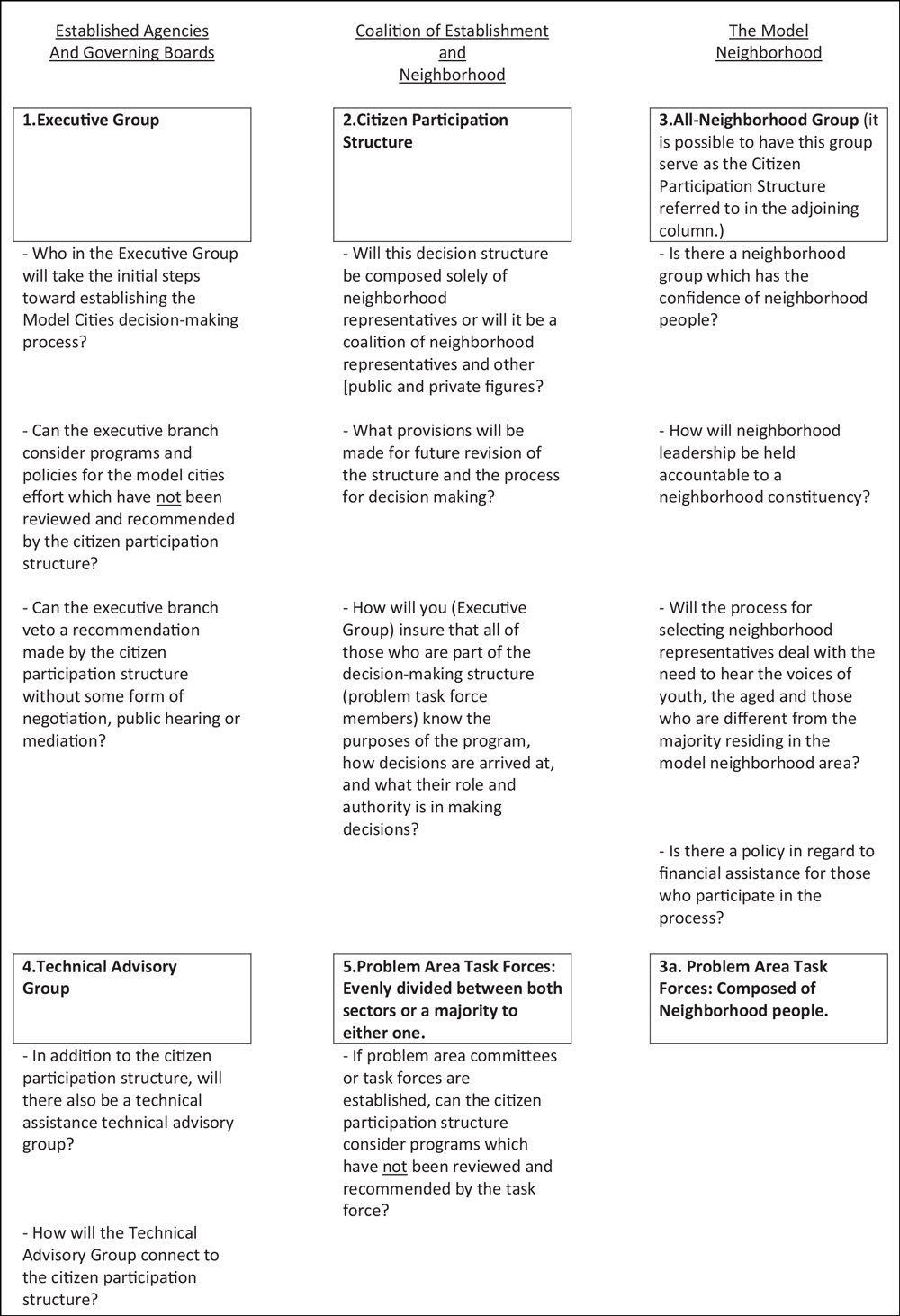Uncovering JAPA
Building That Well-Known Ladder of Citizen Participation

Whether in education or career, all planners grapple with the idea of community participation. Who do we include and how? How do we balance our professional training with enabling communities to construct their own spaces?
Inevitably, we turn to perhaps the most formative document on participation in planning practice: "A Ladder of Citizen Participation" by Sherry Arnstein. This Journal of the American Planning Association article from 1969 has long been held as the paragon for describing the importance of participation and delineating the many forms it takes.
Sherry Arnstein's Life and Legacy
But who was Sherry Arnstein? And what inspired such incendiary comments about citizen participation that pitted citizens against the government in a power struggle?
John Gaber, AICP's article "Building 'A Ladder of Citizen Participation'" in the JAPA (Vol. 85, No. 3) puts Arnstein's work into the context of the story of her life and larger conversations about citizen participation in the 1950s and 1960s.
Arnstein was an early champion for marginalized groups, first as a caseworker in the Alameda County (California) Juvenile Courts and later as the director of community relations for a hospital fighting against segregation. Gaber shows how these experiences shaped her time as a consultant to President John F. Kennedy's Committee on Juvenile Delinquency.
Here, Arnstein experienced citizen participation working with government and citizens to "design and mount the first 14 experimental Community Action" projects. She would later wage another campaign against segregation in healthcare at the Department of Health, Education, and Welfare. She and her "Arny's Army" team, as they were known, fought through the South refusing to accept the status quo.
Arnstein's work eventually led her to the Department of Housing and Urban Development. Her time at HUD, albeit lasting only a year, found Arnstein seeking to transform this organization just as she had done in others throughout her career.
She took on HUD's vacuous calls for "widespread citizen participation" in its Model Cities Program. Using firsthand observations and interviews with Model Cities Program directors, Arnstein, and her colleagues produced Technical Assistance Bulletin No. 3, which Gaber identifies as the source of the Ladder.
In that same document, Arnstein introduces a "checklist for action" — a guide for practitioners proposing citizen participation through the equal collaboration of government and citizens. This partnership would develop a third entity, a coalition, composed of representatives from the government and neighborhood groups which would use its position to act as a liaison between the factions ultimately finding common ground.

Perspectives on Citizen Participation
Gaber illuminates three other ideas of citizen participation that arose at about the same time.
The first perspective, emerging from the Ford Foundation's "Gray Areas" project, involved minimal input from low-income communities, with the government instead making the decisions in its own best interest (nonparticipation).
The second, held by Walter Reuther of the United Auto Workers, recommended the creation of an elite group composed of the "private sector, cities (local government), industry, and the financial community" to make decisions on behalf of citizens (tokenism).
The last, most aligned with Arnstein's own experience, from Attorney General Robert Kennedy, focused on citizen participation as a means of redistributing power and resources to low-income communities (citizen control).
It is apparent that Arnstein's thoughts on citizen participation resonated with community advocates during the 1960s and continue to have an indelible effect on planning practice today. A Ladder for Citizen Participation was born out of Arnstein's frustration with the federal government's resistance to changing its understanding of citizen participation, and a belief that planners had a responsibility to do more.
Top image: Community participation at an open house in Unalaska, Alaska. Photo by Ryan Scherzinger.


